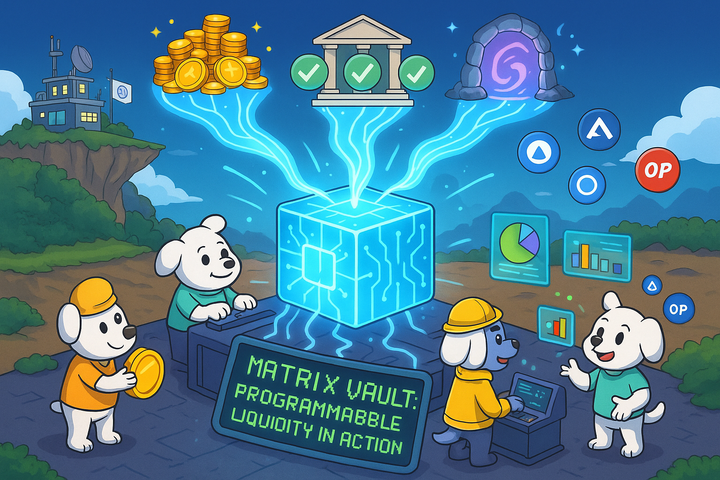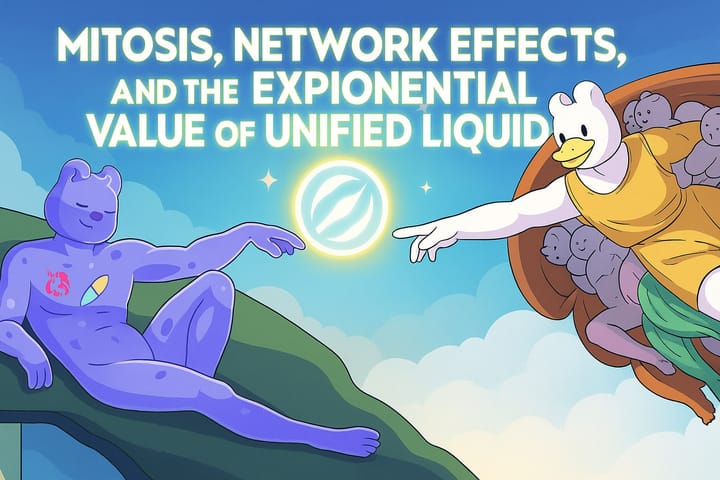Chain Abstraction in Action: How Mitosis Makes Multichain UX Invisible

Bringing seamless blockchain experiences to users and developers through native modular architecture
“Why do I need to switch chains for this?” If you’ve ever used a multichain app in crypto, chances are you’ve asked that exact question. From juggling gas tokens to confirming bridges and switching networks, today’s multichain experience still feels fragmented and clunky — a far cry from the seamless apps users are used to in Web2.
Mitosis proposes a better way: chain abstraction. By abstracting away the complexity of chain-specific logic, Mitosis allows developers to build and users to interact with apps as if everything existed on a single unified platform — even when it doesn’t.
🔹 What is Chain Abstraction?
Chain abstraction allows users to interact with multiple blockchains through a unified interface, removing the need for manual bridging or gas management.
In practice, this means users don’t have to know — or care — which blockchain they’re on. They can access liquidity, assets, and apps across zones without managing multiple wallets, chains, or native gas tokens.
Imagine swapping a token or minting an NFT without switching RPCs or seeing a MetaMask prompt asking you to “switch network.” That’s the power of chain abstraction.
🔹 How Mitosis Implements Chain Abstraction
Mitosis enables chain abstraction through its modular architecture, where individual zones handle specific tasks — like asset issuance, staking logic, or yield rewards — but all interoperate seamlessly.
Here’s how it works:
- Zones: Each zone in Mitosis is an independent chain secured by CometBFT, enabling fast and secure consensus.
- IBC: The Inter-Blockchain Communication Protocol (IBC) connects these zones, allowing messages, assets, and logic to move freely between them.
- Shared Interfaces: Wallets and apps built on Mitosis can interface with multiple zones under the hood, while presenting users with a single, consistent experience.
Example:
A user deposits USDC into a Matrix Vault, which is hosted on one zone. Yield is calculated on another zone, and rewards are paid out using Vanilla Assets — all without the user ever needing to change chains.
🔹 Benefits for Users and Developers
For Users:
- No need to manage gas tokens across chains
- No network switching in wallets
- Safer and faster transactions with deterministic finality
For Developers:
- Build apps once, serve them across zones
- Less chain-specific logic to maintain
- Native interoperability unlocks better composability across DeFi, NFTs, DAOs, and more.

As the crypto ecosystem becomes more modular — with appchains, rollups, and L2s — Mitosis’s approach to abstraction becomes not just convenient, but essential.
🔹 Conclusion
Mitosis is reimagining what it means to build and use multichain applications. By making chain complexity invisible to the end user, it brings Web3 one step closer to Web2-level UX — without sacrificing decentralization or composability.
Chain abstraction isn’t a bonus feature. It’s the foundation for the next generation of scalable, user-friendly blockchain apps.
Yield happens everywhere—on every chain, in every protocol—but with Mitosis CCDM(Cross-Chain Deposit Module), it all seamlessly flows into miAsset on the Mitosis chain. pic.twitter.com/GyrVO73fVM
— Mitosis (@MitosisOrg) January 1, 2025



Comments ()